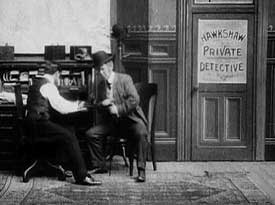Film Noir
4 Minute Film School
Marlene Dietrich and Orson Wells - 'The Future's all used up'
Marlene Dietrich and Orson Wells - 'That Pianola... and Tana'
Double Indemnity
Composition of Shots - use the rule of thirds:
A very useful resource
Click on the link above for a video about the forerunner of film
Click on the link to watch one of the Lumière Brothers First Films
Click on the link for more early films
Edwin Stanton Porter
Some technical info about film or celluloid - how it has influenced today's digital formats. Click on the link below to watch the video.
Single Camera Techniques - A Guide
What are Single camera Techniques in
Moving Image Production?
.... and where do they come from?
Single Camera Techniques are;
• techniques used to shoot film and video (or moving image) with one camera
• These techniques were first developed with the birth of film.
• These techniques have been used in a similar way ever since.
• But updated with the arrival of new technology.
The Birth of Film
• There is great debate about who actually invented film, and what the first film was.
• Many people were involved with its invention.
• The invention of film was not just one invention, but many linked inventions.
The Birth of Film
• 1895
• 'L' arrivee d'un train a la Ciolat by the Lumiere brothers is widely regarded as the first film to be seen by an audience
• The film was a minute in length without any edits
• In black and white
• With no sound
Film would rapidly change and advance technically
➲ Editing would be invented
➲ Colour would be developed
➲ Sound would be developed
➲ Camera lenses would become more advanced
➲ Film emulsion would be come more sensitive
➲ Montage would be theorised and practised
➲ Film would become 'factory produced'
The Birth of Television
➲ Developments in electronics result in Television being invented/developed.
➲ Mass audiences would affect content production
➲ Rulers/authorities realise that visual mass media is very powerful
Single camera Set-ups
➲ Are a way of shooting film and TV
➲ Can be used for film or video production
➲ Are where each shot or camera angle in a project is taken with the same camera but where the camera is moved
➲ Often capture shots out of order and then assemble them into an order later
➲ Are a powerful way of controlling content
Multi-Camera set-ups are different
➲ Are mostly used for Television
➲ Use more than one camera
➲ Are used for 'live situations' such as sport or live debates such as 'Question Time'
➲ Originally used for live adverts
➲ Are used for other studio situations such as sit-com
➲ Are mixed live using a vision mixer
➲ Are expensive to use
➲ Do not give the same control as single camera set-ups
Multi-Camera vs Single-Camera
➲ Single Camera gives more precise control over time and mis-en-scene
➲ Multi-Camera can cover live events more effectively
➲ Multi-Camera effective in low budget studio programmes
➲ When producers have a bigger budget they usually opt for Single-Camera set-ups ie music videos, Adverts
Multi and Single Camera Merge
➲ Modern Moving Image Productions tend to use a mixture of both techniques
➲ Equipment is much more portable, inexpensive and adaptable.
➲ A studio production will use a combination of single camera and multi-camera
➲ A Film may use a single camera with a 2nd unit, or multi positioned cameras for special effects.
Conclusion
➲ All techniques have evolved from the development of film and television
➲ All techniques are now much more adaptable and flexible
➲ All techniques still require careful implementation by skilled technicians and programme makers.





No comments:
Post a Comment